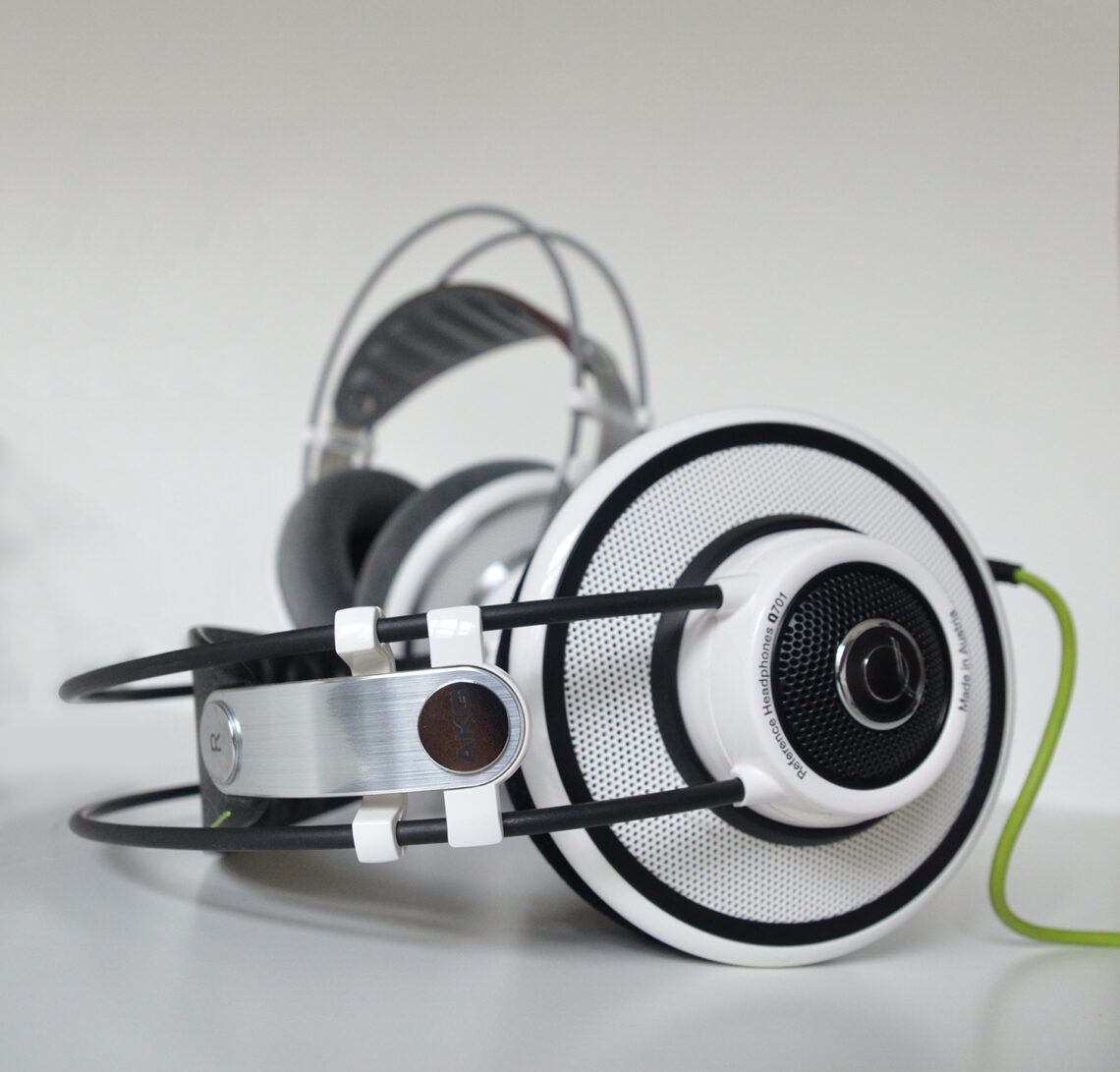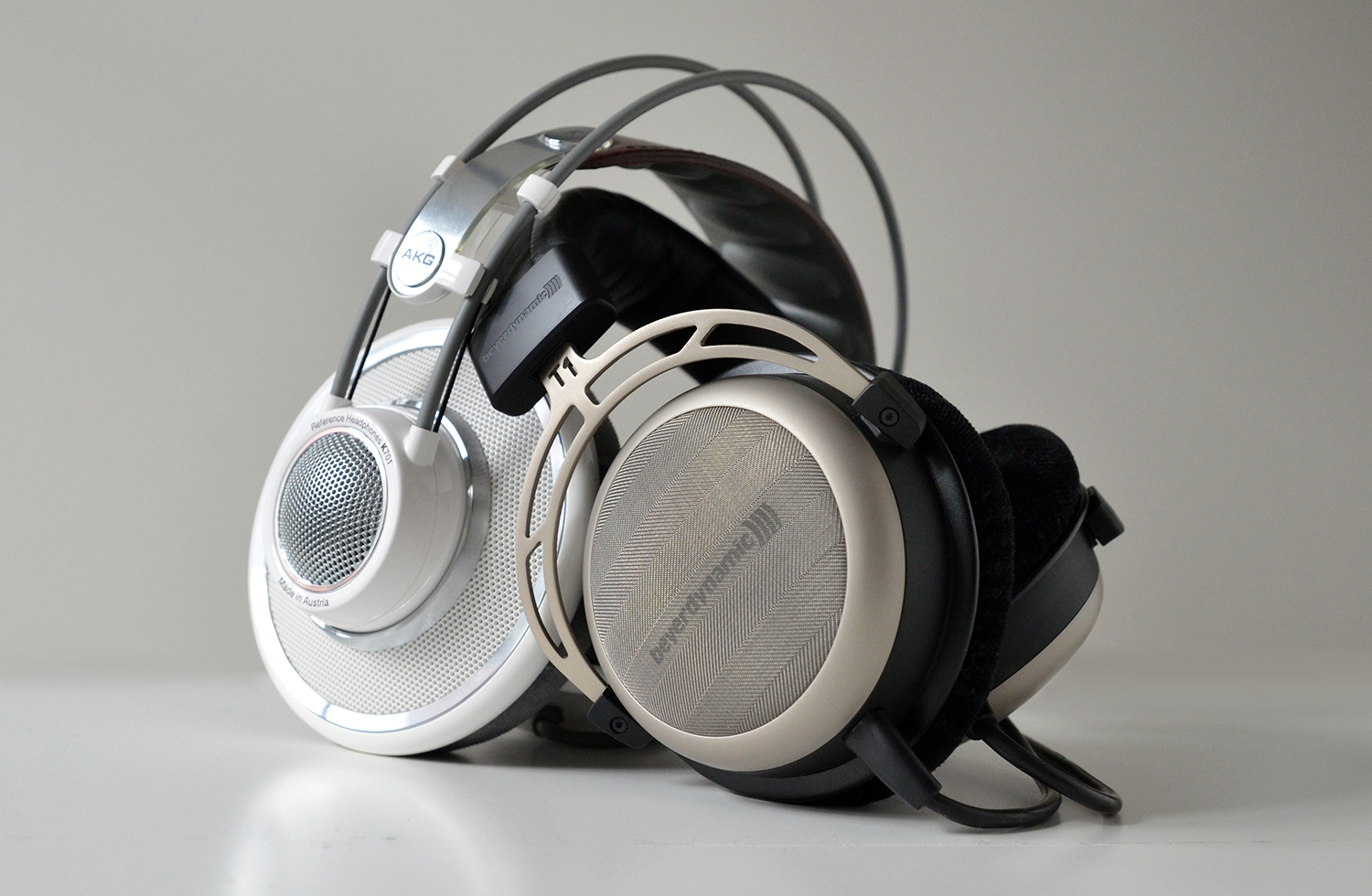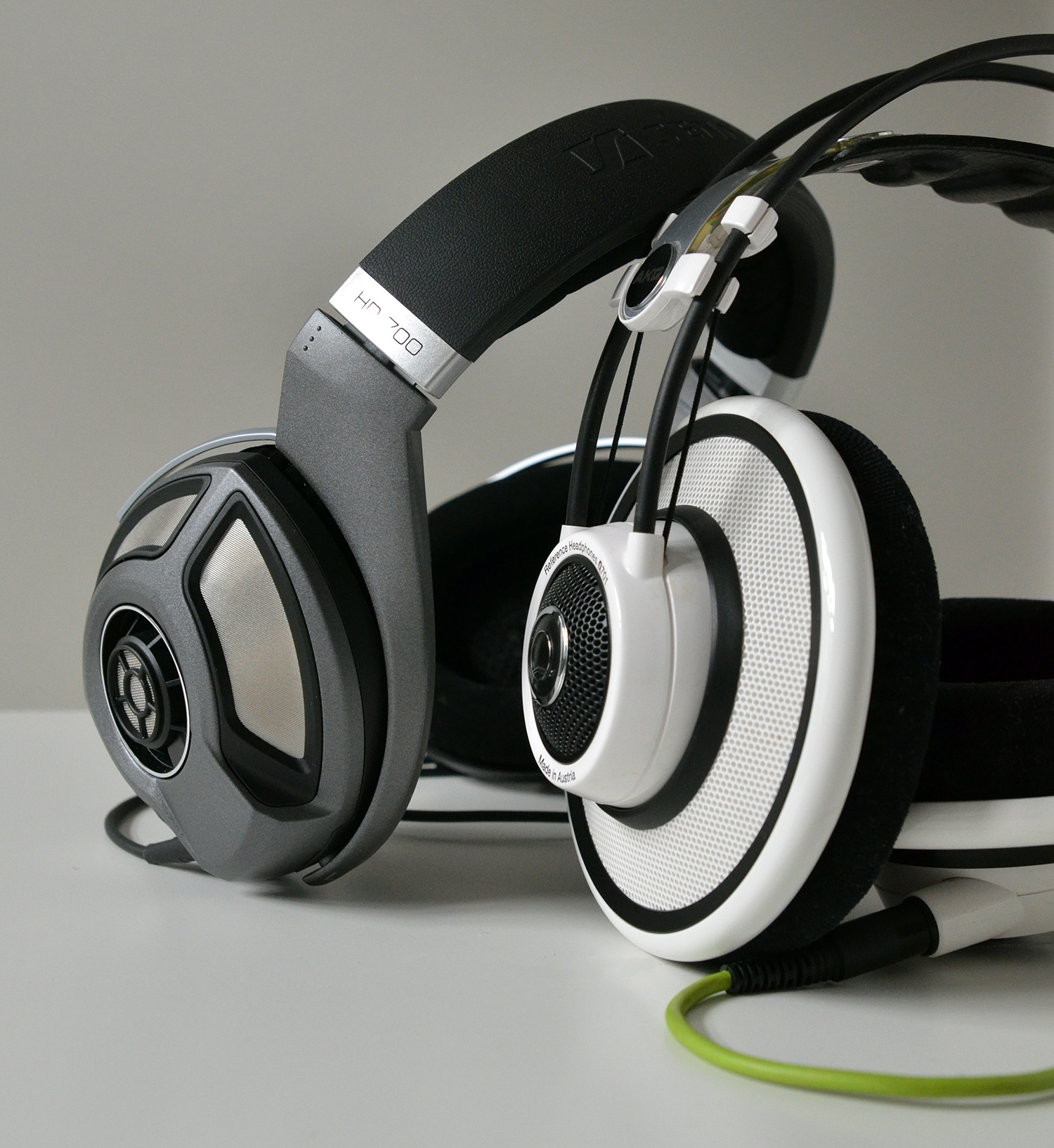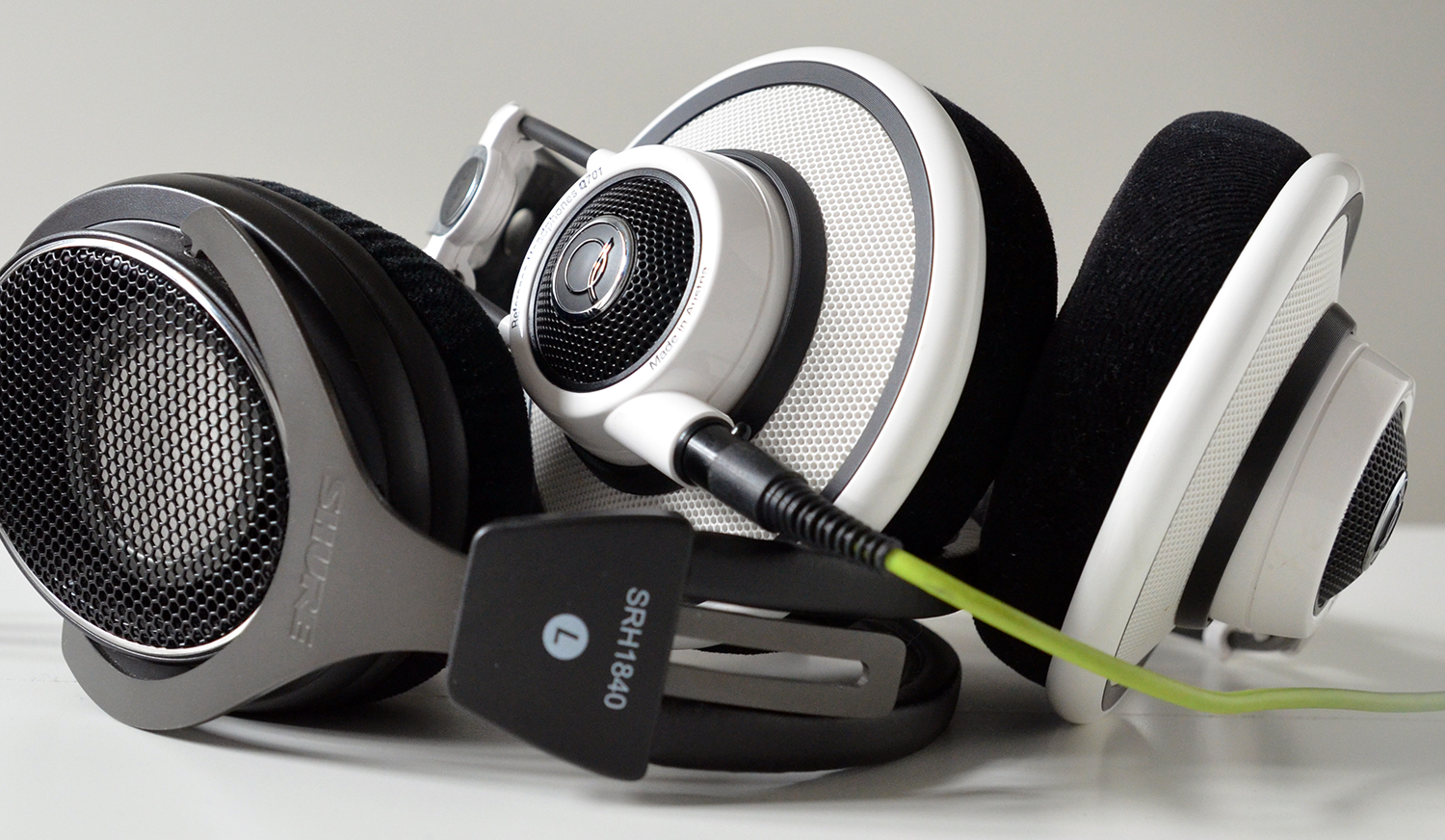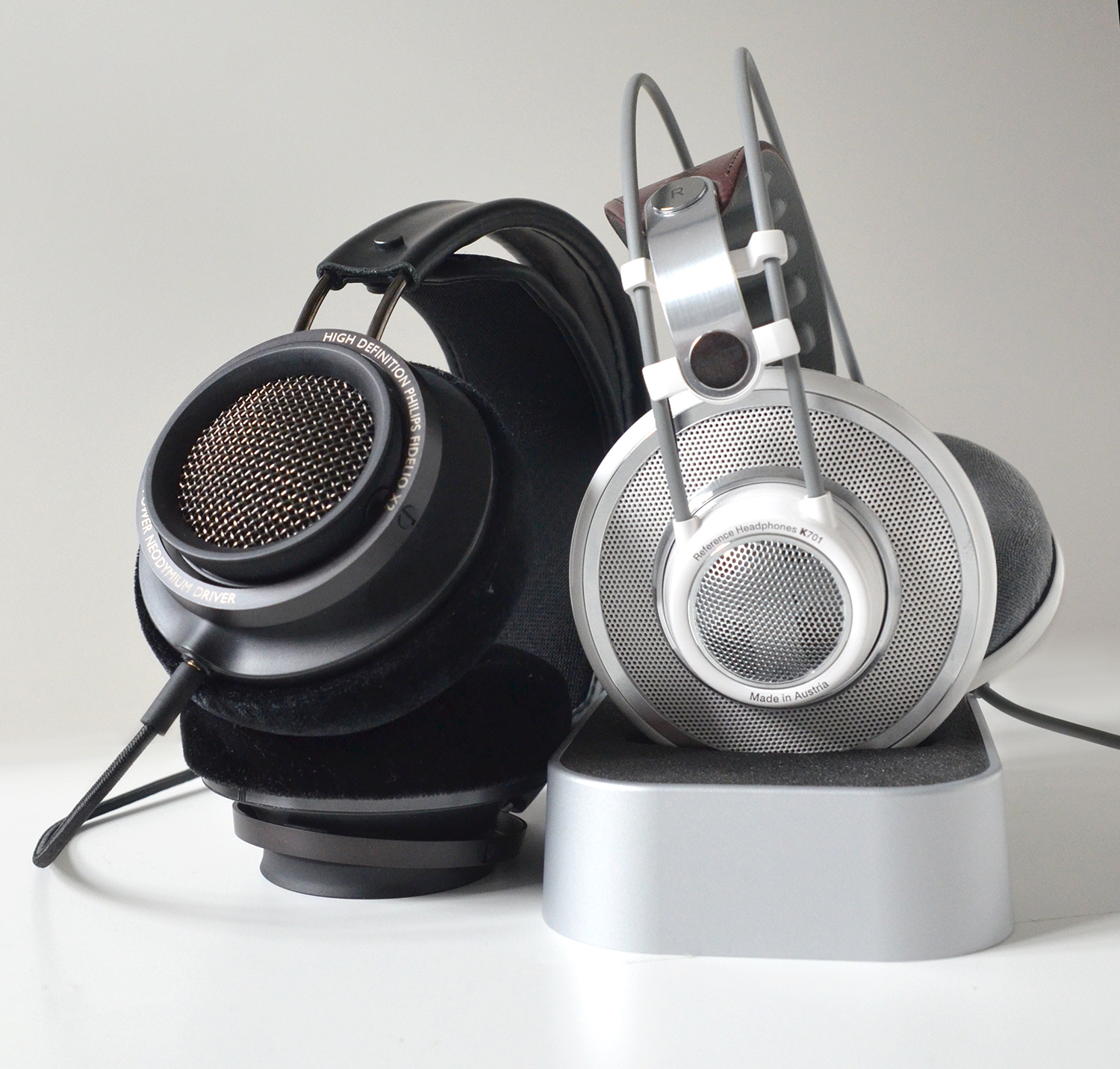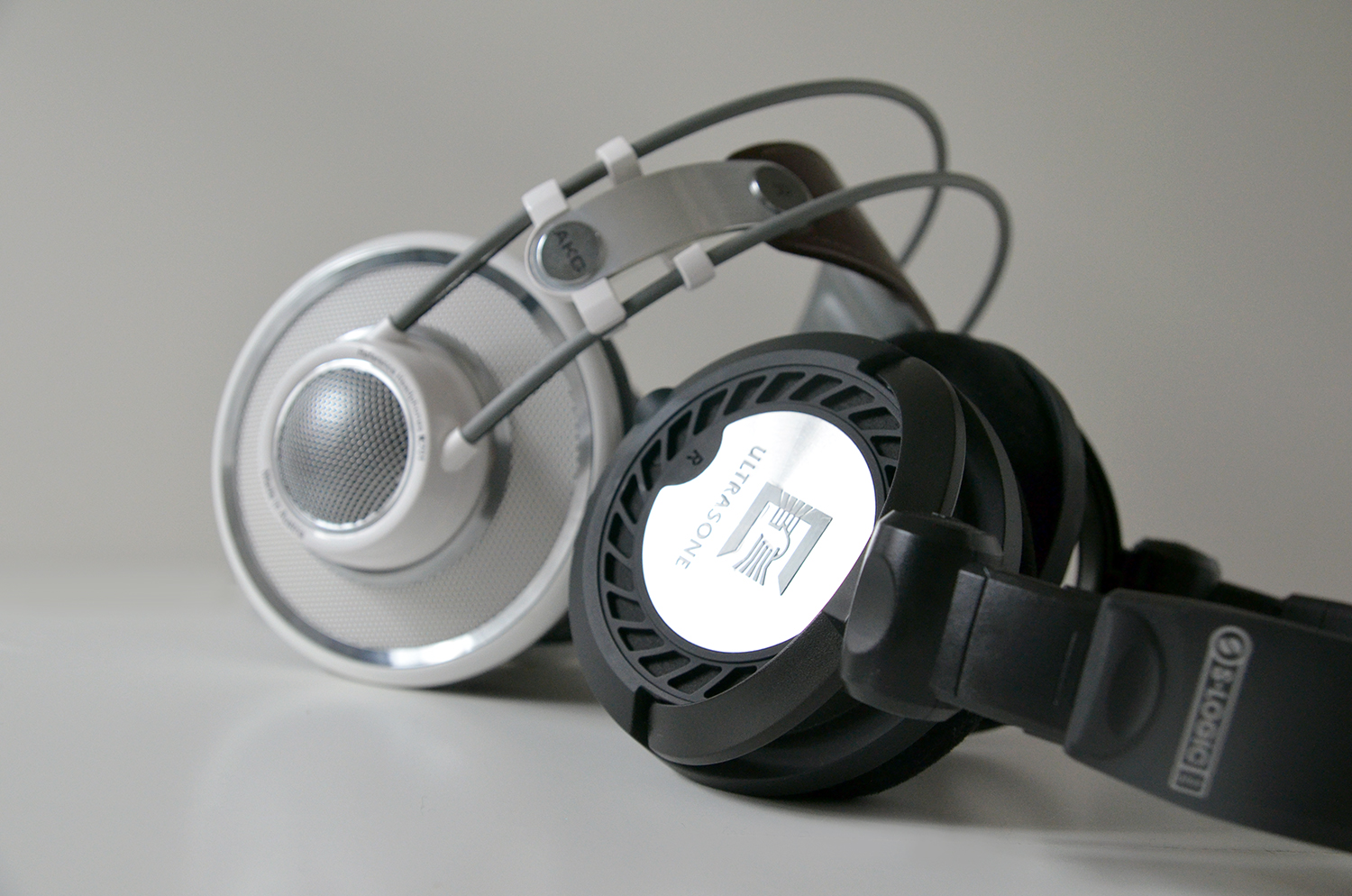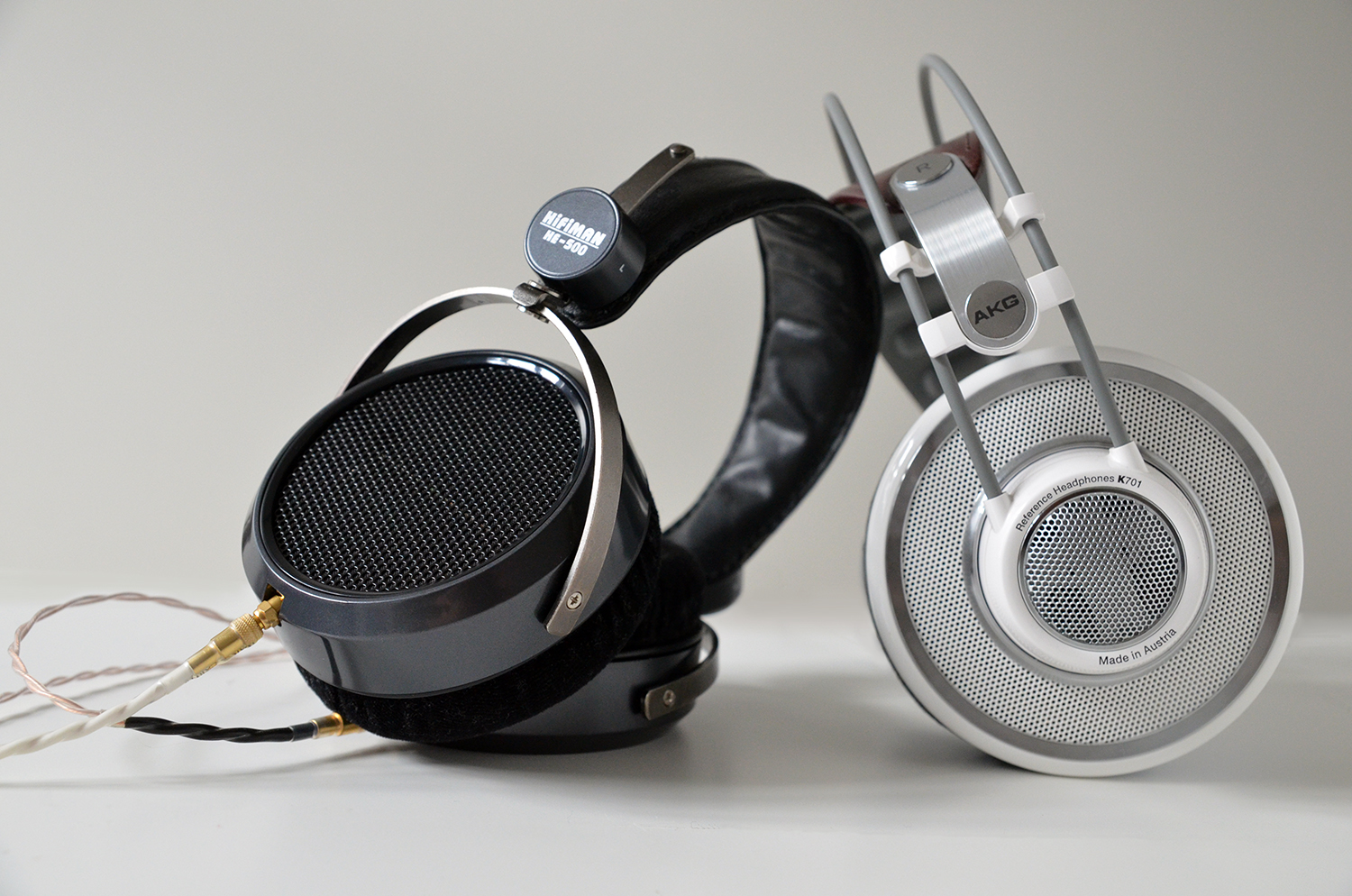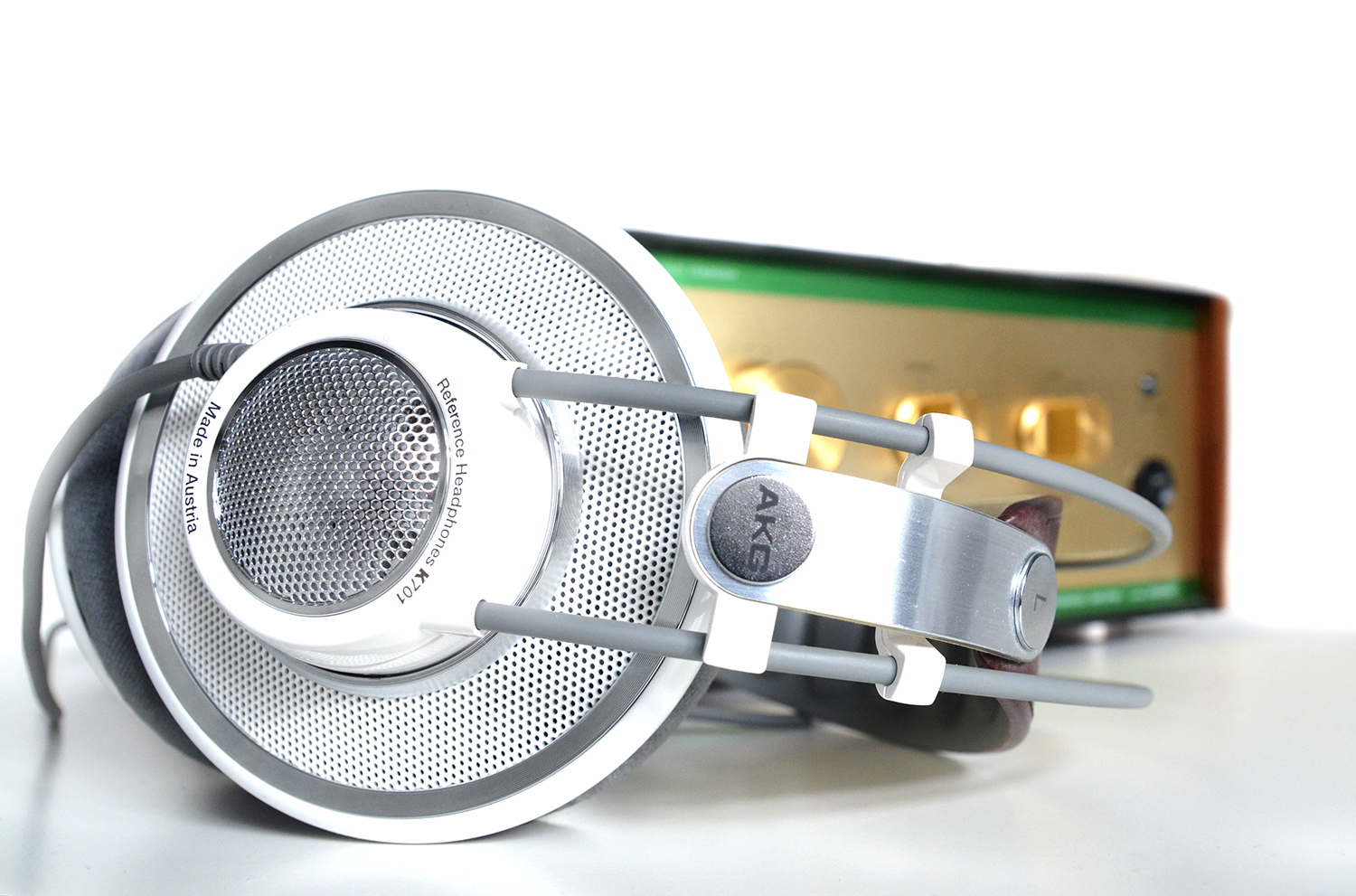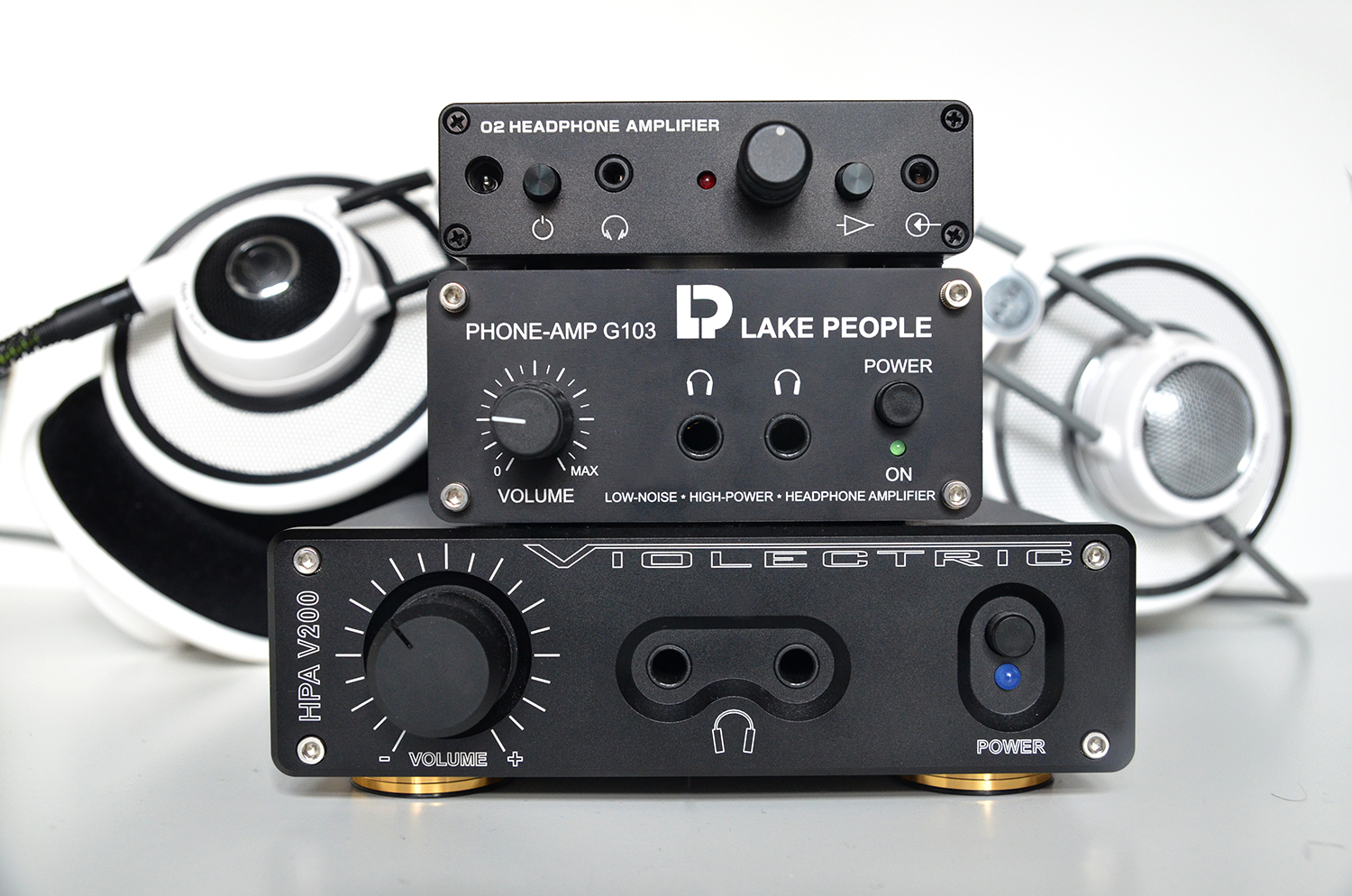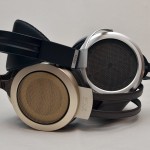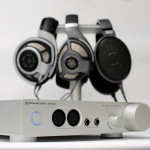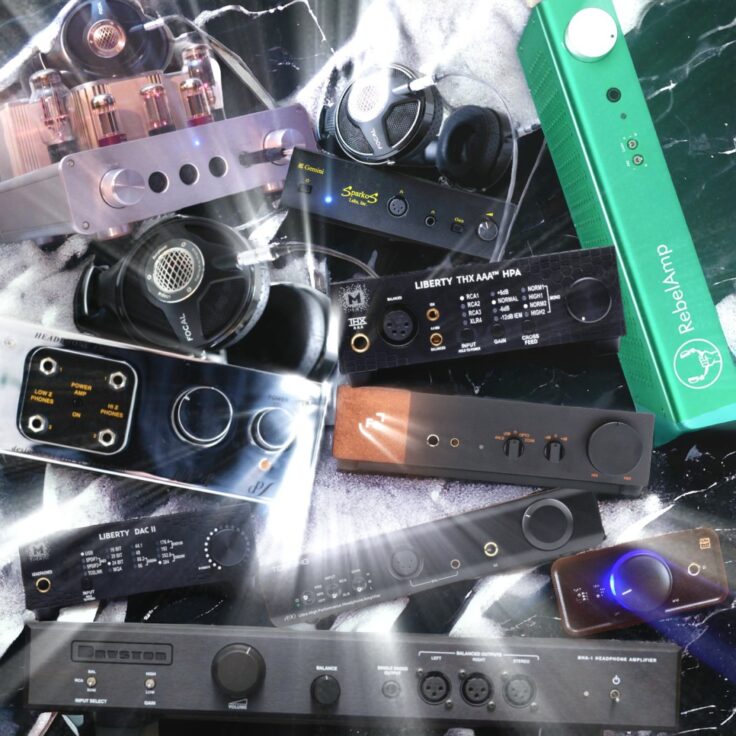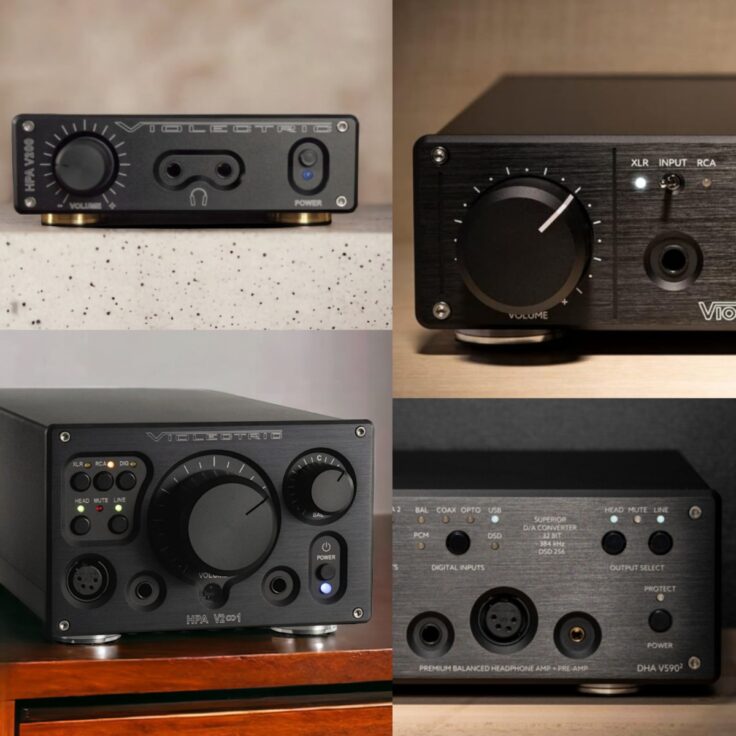The AKG K701 was launched ten years ago. It is still in production, as a part of AKG’s “professional-line”. It is by now a classic. The Q701 was launched five years later, and was branded as the result of AKG’s cooperation with the artist Quincy Jones, adding a detachable cord, a Q-logo and different choices of colors. But did they really change the sound?
AKG K701 vs Q701
I have read multiple opinions that the Q701 is supposed to be tuned towards a warmer sound signature, but when I first sat down with it and the K701, I couldn’t really tell them apart. After a while, getting accustomed to their sound, I did notice that some songs did actually sound a bit different. I used the Questyle CMA800R amplifier for this initial comparison, a great match for the 701’s (and almost anything else). They both sound very open and dynamic with the Questyle, very fast and clear. The bass is quite punchy, even though these headphones have a reputation for polite bass.
Track by track comparison
In the following I will compare the two versions of the AKG 701 track by track, indicating which I prefer with a simple “>” ( “A > B” means that “A betters B” )
Greene Serene and Per Jørgensen: “Maple Noise” – An excellent tune, a snappy acoustic jazz piece, it sounds very dynamic and entertaining on the AKGs. The instruments are standing out distinctly, percussion is snappy, bass line is crisp and clear. The acoustics of recording room is communicated in a very convincing way. The Q701 is a bit softer on the edges than its sibling. It feels slightly less clear. Even though the bass is a tad fuller, I really prefer the K701 clarity. K701 > Q701
Glasser: “Plane Temp” – In the intro, the Q701 has a tad more warmth, and when the bass and vocals set in, the bass is certainly more pronounced. The K701 is thinner sounding in the intro, but also cleaner. The Q701 gets a little crowded in comparison. Q701 > K701
Max Richter: “Vivaldi Recomposed, Spring 1” – I really like this new take on Vivaldi. And the K701 does it no injustice. Violins are jumping and dancing with swift airiness and texture. Violins like these are what the K701 was made for. Switching to the Q701 it still sounds lovely, but a tad of that magical clarity is sacrificed for a slightly softer tone. I find myself cranking up the volume half a notch. It still is a matter of preference, because the softer presentation of the Q701 is still very close. The differences are not very obvious, but I like the K701 better for the extra crispness and air. K701 > Q701
Tomatito: “Donda Esta Tu Carina”– The spanish vocals and Flamenco guitar sounds slightly more natural with the Q701, but the differences are so minute that it is hard to separate the two headphones . Q701 = K701
Thomas Dybdahl: “This love is here to stay” – On this track, I get the feel that the bass is more pronounced with the K701 than the Q701. I have to swap back and forth many times, but there is an audible difference. Vocals are clear, and crisp, bass is nice and textured on both, but I prefer the K701 for in addition being a bit fuller and warmer, surprisingly. K701 > Q701
Conclusion: AKG K701 vs K701
The differences between these headphones are minute. It might be just as much difference between different batches of production of the same model. maybe it is the fact that my K701 has been played for more hours. Until the last track I thought I’d say the Q701 was slightly warmer and fuller sounding, and the K701 a tad crisper and clearer. But it seems to depend a lot from track to track. Even though I had a general preference for K701 in this listening test, I think the difference is so small I would be indifferent which one to let go. There is a wide range of opinions on how these generally compare and what really is the difference on the internet. Based on my experience with my two units, the difference is really, really small. And, by the way: Headphone review-legend Tyll Hertsens himself thinks so too – and he even measured them both here
Headphone comparisons
The K701/Q701 is in a very competitive price segment, where you usually get very high value for your money. There are many relevant headphones to compare the K701 and Q701’s to, and I have compared them directly to the following: Beyerdynamic T1, Sennheiser HD700, Sennheiser HD650, Shure SRH1840, Philips Fidelio X2, Ultrasone PRO 2900 and Hifiman HE-500. All are great headphones, but as you will se, for different reasons. I use various amplifiers for this comparison which I mention in the text. I always use amplifiers I considered to do both headphones justice. I use both the K701 and the Q701 in this test.
Beyerdynamic T1 vs Q701/K701
Tomasz Stanko: “Terminal 7”– Some readers will recognize this tune from the intro of the first season of the “Homeland”-tv series. Playing it on the Cary SLI-80 integrated amplifier, which indeed is a good match for both cans, it sounds simply marvelous. The percussive elements are giving the AKG’s a chance to show off their dynamic capabilities, sounding snappy and spacious, beautifully rendering the music. But T1 is even more spacious, the sound is staged in three dimensions in an almost magical way the K701 and Q701 cannot match.
Vincente Amigo: “La Tarde es Caramelo” – The flamenco guitar, male vocals and range of percussive instruments in this tune are portrayed in a natural, clear, conceiving and enjoyable way by the AKG’s. There is a lot going on in this track, and the AKG has the dynamic and clarity to show it. But when switching to the T1, there is even more going on. There are more ambient sound especially in the treble region, the guitar picks are coming from an even more defined place in space.
David Bowie: “Sue” – Switching to the Questyle amplifier, this track is really wonderful with the 701’s. Especially the bass is groovy. Even though there still is more detail and precision with the T1, I find the presentation of the AKG’s equally enjoyable. However, when I go back to the Cary amp, I find the T1 to be more rounded, again being more enjoyable.
Emerson String Quartet: “Martinu/Poco Allegro” – Again starting out on the Questyle, there’s more detail with the T1, yet I find the AKG’s just as satisfying to listen to. It has a bit more meat on the bone of the string quartet’s strings, so to speak, the T1 can sound a bit thin. Overtones are more audible with the Beyer, though. If there is any difference between the AKG’s, the K701 is a tad sharper cut, in a good way. Switching to the Cary amp, I again find the T1 to be more rounded and essentially better, demonstrating that amplification really matters.
Conclusion
The AKG K/Q701’s and the Beyerdynamic T1 actually have quite similar tonality. With an emphasis more on midrange and treble than bass, they have a very airy and spacious presentation. The T1 does have more bass when asked for, and also goes deeper. It is sharper cut in the upper registries, and presents an even more convincing presentation of the space in which the instruments are playing. I would however hold the K701/Q701 as the less prone to induce listener fatigue, which for some can be a problem with the T1. This depends on the amplifier used, and I noticed that when I used the ultra-precise Questyle, the T1 got almost too precise, making the more fleshed out K/Q701 and appealing alternative, while switching to the Cary SLI-80 tube amplifier, the T1 was less sharp and more pleasant. Both headphones are very dynamic, spacious and clear sounding, and both benefits greatly from a good amplifier. The T1 used in this review is the original T1, not the new T1 mk2 version (which is supposed to sound a bit warmer, with more bass bloom)
Sennheiser HD700 vs AKG Q701/K701
Gotan Project: “Percussion Part 1” (Inspiracion, Espiracion) – With the Questyle amp, the three dimensional sound from the HD700 combined with its laid back treble makes this a submersive experience. The monotonous drums are magically pinpointed in space. The Q701/K701 also is a good experience, but not as hypnotizing.
Floratone: “Mississippi Ringing” – Still with the Questyle, the HD700 wins this round. The bass guitar is clearly deeper and fuller, there is more space between instruments. The depth of the room is very tangible, the various guitars played by Bill Frisell and fiddle strings are really well separated and portrayed in a very engaging way. Actually I found the HD700 so engaging with the whole album, I just couldn’t stop listening. Switching to the Q701 just made it flatter and less fascinating in direct comparison. Not bad, but you get the picture.
I continued running my whole playlist consisting of various genres on each headphone, on both the Questyle CMA800R and the Schiit Asgard 2 amplifiers. What I noticed was that the HD700 sounded almost as good with the Schiit as with the Questyle. There were noticeable improvements moving to the Questyle, but not at all like with the AKG Q701. The AKG almost transformed: It got snappy, punchy, the bass was very much more pronounced. So whilst I tended to prefer the HD700 in direct comparison, I found the Q701 almost as enjoyable when given some time on the Questyle.
Intrigued by this, I moved on to my big tube amp, Cary SLI-80, and then the comparison was even harder to make. I tended to prefer… both. But they sound very different. The AKG Q701 and K701 basically sound more wide and open, but also more diffuse, more relaxed, and maybe more “natural” (whatever that means). Even though it is a tad dark in the treble region, the HD700 is a bit intense sometimes. Usually that is in a good way, though. HD700 certainly has better bass reproduction and 3D imaging, but for some reason the Cary just made the AKG’s shine at the same level.
Conclusion
My general preference was for the HD700 due to the increased imaging and bass reproduction. However, depending on the amplification the AKG was on par, but for different reasons. With the Schiit Asgard always preferred the HD700, while with the Questyle I sometimes wasn’t sure, and with the Cary I could as easily prefer the Q701/K701.
Shure SRH1840 vs AKG Q701/K701
Playing the modern jazz piece “Maple Noise” (Greene Serene and Per Jørgensen) on the Cary SLI-80 amplifier, I find these cans surprisingly similar. They deliver the dynamic percussion in the same dynamic way, presenting the same kind of sound-space. It is not difficult to adjust to the change in sound when swapping headphones at all (as it was with the T1 and HD700). They have the same airy, yet slightly diffuse but pleasant soundstage. However, I find that the SRH1840 delivers better when presenting Per Jørgensens trumpet. It is juist sharper and raspier, more involving.
Moving on to “Plane Temp” (Glasser), a more complex song, the Shure comes out as clearly fuller sounding. The bass is more pronounced, but the fullness is primarily because the midrange seems to have more presence, in a preferable way, the AKG sounds slightly thinner.
Moving on to the Schiit Asgard 2, playing the same songs, the AKG’s are clearly thinner sounding than on the Cary, more lacking in bass and fullness in comparison to the Shure than before. This mirrors my experience when I compared the HD700, making me start to conclude that the Asgard just does not bring out the full potential of the AKG’s. Going on to the Questyle CMA800R amp, I again get the experience that the bass and fullness of the AKG is back, even more punchy than with the Cary. The Shure on the other hand, gets in some ways the opposite result when I move from the Schiit to the Questyle, resulting in a slightly thinner, yet more precise presentation.
It’s all about components matching with this hobby. I realize I need a fourth alternative to get a better grip on the two headphones in question. So I hook up the AKG-friendly Violectric V200, which also does justice to the more easily driven SRH1840.
Starting out with Brahms’ 3rd symphony, (1. Allegro con brio) the Q701 renders it beautifully and delicately. The layers of strings blend into each other as a whole while still being separated enough to follow. Flutes and plucking violins alike are nicely presented, the crescendos are satisfyingly dynamic. The SRH1840 also is a great listen, but a bit rawer, losing some of that stunning delicate rendering of the Q701. Not that the Shure ain’t delicate, but in direct comparison I find the AKG slightly nicer. The impression is the same with the Questyle amp, I also notice that the Shure feels a bit crowded in the grand intro in direct comparison to the Q701.
Playing one of the “Young Vivaldi”’s short violin concerto pieces, the Q701 again feels to give the strings more tenderly attention, the Shure can feel a tiny bit bit strained in comparison. I also gave them a round with the wonderful Audio-gd Master 9 amplifier, playing Mahler’s 2nd Symphony. Except for the Shure giving slightly more body to the kettledrums, I generally prefer the presentation of the Q701 for the same reasons as mentioned before.
Concluding, I find the AKG Q701/K701 to render bowed instruments especially in a stunningly delicate fashion. This headphone is made for string and bows. The Shure SRH1840 is also fully capable of delivering beautiful music playback – but it has a rawer tone to it. For other music than classical, the Shure tend to be prefered, because its ability to deliver more body to the bass and mids. But in the big picture, these headphones are quite similar.
Q701/K701 vs Philips Fidelio X2
The Philips Fidelio X2 just has a lot more bass. So getting past describing it as “having more bass” took me a while. It is just obviously so much more bass that I really had to listen to quite a few track to get a grip on what more to say.
Finally I found a nice tune (without deep bass); the toned down experimental jazz piece “18:06” (by 1982). I started playing it on the Cary amplifier, and felt I got somewhere. Listening to the Fidelio, my first thought was “engaging”. Playing the K701, my first thought was “gentle”. The K701 renders the woodwind and bowed instruments so delicately, layered and gentle. It is a delightful listen. The Fidelio is tuned quite differently, definitely rawer sounding, more body and fullness to the strings and winds. Both headphones presents me we a nice amount of detail, air and layering, but the K701 more so. K701 > Fidelio
With “Maple Noise” (by Greene Serene and Per Jørgensen), it is the other way around. Going from the Fidelio to the K701 makes you instantly ask “where did the bass go?”. But when you acclimatize, the K701 got bass, just in polite portions. The Fidelio also has a rawer and more vibrant presentation of the trumpet, and the percussion is also more lively, making it a more fun listen. Fidelio > K701
Conclusion When amped properly the K701 gives you more fine detail, and certainly has a more gentle touch. It is (again) the better at portraying classical acoustic instruments. It is also presenting a more airy sound-scape. The Fidelio has a more vivid presentation, is easier to drive (doesn’t demand as much from the amplifier) and has a much more engaging bass. But the bass bloom can often get too much, and certainly can be held against it as much as for it. It is not neutral. But it is fun!
Q701/K701 vs Ultrasone PRO 2900
I have compared the PRO 2900 to the Q701 in an earlier review, and I basically prefered Q701 with strings, and PRO 2900 with anything that required bass. Read more here.
Q701/K701 vs Hifiman HE-500
The sadly discontinued HE-500 have in common with the AKG’s that it is hard to drive, it needs a good and quite powerful amplifier to open up. They have quite different sound signatures. Here’s what I found doing a brief comparison on the Questyle amplifier.
“Maple Noise” (by Greene Serene and Per Jørgensen) – The K701 sounds more airy and dynamic, while the HE-500 has more bass presence, reaching lower. K701 > HE-500
“Plane Temp” (by Glasser) – Basically the same here, but this track needs the bass more. HE-500 has a more enveloping sound.
“Spring 1” (Richter Recomposed) – Clearer and more open sounding with the K701, more meaty with the HE-500.
“This love is here to stay” (by Thomas Dybdahl) – The HE-500 just has that extra groove factor and warmth that makes this track shine.
“Sordid Affair” (by Röyksopp) – The K701 just sounds anemic in direct comparison.
Conclusion No doubt these are different beasts. For most acoustic music, I would prefer the K701, for most popular and electronic music, I would prefer the HE-500. They do, however, thrive on many of the same amplifiers, like G103, V200, Taurus, Questyle and Leben CS300XS – so they are obvious complementary headphones. Too bad HE-500 is no longer in production.
Q701/K701 vs Sennheiser HD600 and HD650
I have previously written a separate piece about the Q701 and the HD600/HD650, so I am just gonna quote my own conclusion: “Compared to the Q701, I really find the Q701 to be significantly better for acoustic music, especially classical pieces like string quartets. But as an all-rounder, the HD600 seems like a better choice. Losing some air and precision, but gaining on bass quantity and intimacy. HD600 gives you a nice blend of HD650 and Q701 in one package. What you loose on this all-in-one is the extreme delicious smoothness of the HD650 and the superb imaging and airiness from the Q701” Read it all here.
Amplifier comparisons
The AKG K701 is legendary for needing a good amplifier to sound really great. Together with the Sennheiser HD650 it has been one of those classic headphones that made enthusiasts spend substantial amounts on amplification, manyfold the worth of the headphones themselves.
High-End Amplifiers
When I started listening to the AKG K/Q701 for this review, I hadn’t listened to them for a while. The first amplifier I tried was the costly Questyle CMA800R – and I was blown away. I felt the AKG’s played way above their league, extremely dynamic and spacious in a way usually reserved for more expensive headphones.
Then, after trying different less powerful and expensive amps, I rigged up my Auralic Taurus and put on Leonard Cohen’s “Popular Problems” album, I just got blown away – again. The extremely powerful presentation is once again reminding me that the K/Q701s are fabulous headphones, and has plenty of quality bass when amped properly. The fabulous Nevermind (True Detective) starts with a tight, tactile and textured intro, then Cohen’s raspy, complex voice magically appears in all its glory. What a joy. Also 1981’s quiet album “Pintura” is magnificent with the K701 and Taurus. Soundstage almost like the HD800, voicing even better. Drums and bass has got that tactile punchiness that is just so pleasing to listen to.
Another great amp for the AKG is the Leben CS300XS integrated tube amplifier. Running the Taurus up against the Leben CS300XS, proved them to be on the same level, and actually very similar sounding with the AKG K701. I listened through many of my test-tracks not being able to find something significant to differentiate them with. Both are punchy and well balanced, spacious and detailed, yet with nice warmth.
I actually felt there was more of a difference between the Questyle and the Taurus than between the Taurus and the Leben. Not a very big difference, but the Questyle feels a bit clearer and better separated. This is not obvious on all track, but some songs the Questyle is clearly more articulate, more definitive, ever so slightly more punch in the bass too. Taurus has a slightly warmer feel to it in comparison. But most of the time, they sound very close.
I also tried out the Q701 with the Cary SLI-80. It was close to the Leben CS300XS, more here.
In conclusion, I prefered the Questyle, found the Taurus and Leben CS300XS on the same level, and the Cary SLI-80 just shy of these two. But, the amplifiers mentioned above are all a bit out of the price range of normal AKG K701/Q701-buyers. In the following, I’ll look at some less pricey stuff.
Lake People G103 vs Violectric V200
Lake People and Violectric is actually the same company, but different brands. They share a similar “house sound”, but the G103 is ⅓ of the cost of the V200.
“Terminal 7” (by Tomasz Stanko) – It is really hard to tell these apart here, actually. They both sound very good. Kind of smooth, as the Violectric/Lake People sound is. With some of the percussion, I find the V200 having a more refined touch, but by a very small margin. Basically I am overwhelmed with the little G103’s performance.
“1726” (by Higdon/Hahn) – Moving on to some classical, I still find them not too easy to tell apart, and again anything, the treble intensive percussion is what to listen for, slightly coarser with the G103, but not by much. The strings feel more compressed with the G103. There is more micro detail on the V200, more structure to the tone, in a smoother way. G103 is a little harder. But it is still a darn good listen, and very very close. The extra forwardness actually might be held as a positive sometimes, slightly more upfront.
“Midnight Feast” (by Mr Scruff) – With this electronic music, it is again the percussion, the treble, that tells them the most apart. There is a rattle sound playing all along this song’s intro. It stands out more on the G103 in a raspier, grainier way. Both have nice control of the nice and full bass, the image depth is great.
So, concluding, you get a little more refinement from the V200, but the G103 basically have what it takes to power the K701/Q701 in a great way, at a fraction of the price.
Objective 2 vs Lake People G103
Objective 2, or just “O2”, is a the headphone enthusiast community’s budget reference, designed by DIY blogger NwAvGuy, costing about half of the G103 depending on the manufacturer.
Floratone (by Floratone) – Going from the O2 to the G103, the sound signature is quite similar, but the G103 has more refinement and even some more deep bass.
Cite Tango (by Astor Piazolla) – They are not very easy to tell apart on this song, but the 103 seems a bit more refined, but not by much.
Brahms Symphony no III (part 5) – Same thing here, they are quite similar, but the 103 a tad more refined, slightly more depth of the orchestral presentation.
Conclusion These amplifiers are very close. The biggest difference is that the G103 digs up more of those low frequencies in the deep bass, but when there are no such tones in the recording, the dissimilarity is very subtle. So, the G103 is slightly better than the O2, but by such a small margin, that the O2 certainly gets an award for exceptional value.
Schiit Asgard 2 vs Objective 2
Schiit Asgard is a really nice amp, that have amazed me with fine headphones like Sennheiser HD800 and Audeze LCD-X. With the AKG Q/K701, however, I am not sold:
“Sordid Affair” (by Röyksopp) – The bass is clearly fuller on the O2. The Asgard sounds kind of constrained. There is more punch and rumble with the O2. Warmer and fuller sounding, deeper soundstage too. Clear win for the O2 here.
“Cite Tango” (by Astor Piazolla) – Same here, the bass is definitely less pronounced with the Schiit.
“Richter/Vivaldi, Spring 1” (by Richter)- Not lots of bass on this track, so the differences are not as obvious. But the O2 still is better. There is, even in the midrange, something constrained about the Asgard.
“Floratone” (by Floratone) – Again, the O2 gets the bass right, giving a warmer and more inviting presentation.
Concluding: The Schiit Asgard 2 seems like a suboptimal match for the K701. It just sounds flatter, colder, a bit constrained. (I og course tried out the flipping the gain switch back and forth,but it didn’t do much of a difference). The O2 on the other hand, presents itself as excellent value and drives the K701 very well.
Lake People G103 vs Questyle CMA800R
“Sordid Affair” (by Röyksopp) – Expecting the Questyle to do wonders with the bass after previous wow-experiences, I get a bit disappointed when coming from the G103. Not that the Questyle is less good, it is just not that much better. But then I notice some subtle percussion in the background I hadn’t noticed before, and realise that this is where the differences are. The smaller details are just clearer and more delicate on the Questyle. Things seems more at ease, details flow more effortless and with more.. detail.
“Floratone” (by Floratone) – Again, the bass isn’t what differentiates these amps. G103 has enough oomph. But the rattle has more texture and is better defined, and there is more space, smaller nuances shine through the mix more with the Questyle.
“Villfugl” (by In the Country) There is more texture to the female singer, there is more resonance to the ringing triangle, a more relaxed soundscape with the Questyle.
Concluding, the Questyle clearly is a better amp, and brings out even more greatness from the K701. But the G103 really brings you almost there. Diminishing returns is a term used for comparisons like this.
Violectric V200 vs Questyle CMA800R
“Floratone” (by Floratone) – These amps both make the K701 shine. Both digs deep in the bass, delicate treble, great imaging. The V200 is a bit warmer and smoother sounding, the Questyle slightly more up front. I cannot really say I prefer one over another here.
“Donda esta To Carino” (by Tomatito) – Same thing here, the V200 is slightly warmer. really hard to tell them apart for anything else. The female vocals, guitars and various percussion is greatly rendered.
“Young Vivaldi – RV813 III Allegro” – Finally there is a clear, discernible difference. The strings are actually way better with the Questyle, more vibrant and sharper. Really impressive performance, this violin concerto kicks ass..
Cite Tango (by Astor Piazzolla) – Again, the Questyle gives a sharper picture. The rasping sound that goes through the whole song has this extra nice raspiness to it. Things are slightly more focused. Not a huge difference, the V200 is great. But with music that have distinct elements such as with this track, the Questyle outshines the V200 with increased separation and a slightly more forward presentation.
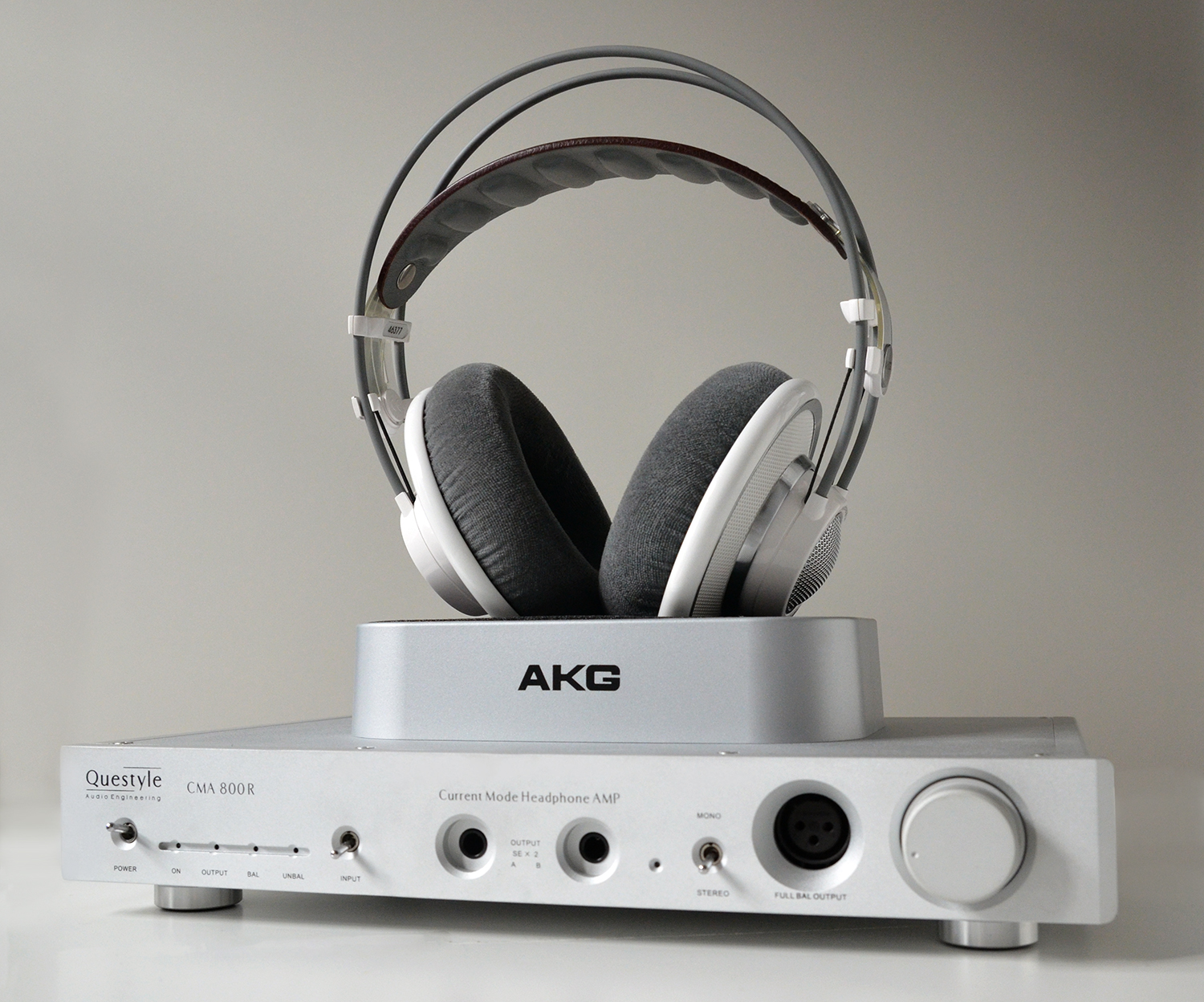
Amplifiers Concluded
The Questyle CMA800R is the best of the bunch, but all the higher end amps did great. The Lake People G103 has the best value/performance ratio, but the small Objective 2 did pretty good as well . For some reason, The Schiit Asgard 2 didn’t hold up.
Wrap-up
These headphones are very capable, offering a very open soundstage, tight presentation and beautiful tonality. They do have a good bass punch, but lacks some of the deep bass. Dynamics are great on these, but don’t expect them to give you that monster bass.
They are absolutely stunning for strings and most acoustic music. You need a good amplifier, but a good amplifier isn’t necessarily expensive. There is basically no audible difference between the Q and the K model. The Q-version has got a detachable cable and various color options, though. Pricing of these headphones varies quite a lot, but if you get a good price on these, they are bargains. And they are definitely classics.
Music Used
“Maple Noise” by Green Serene & Per Jørgensen from “Living Live”
“Plane Temp” by Glasser from “Ring”
“Richter: Recomposed By Max Richter: Vivaldi, The Four Seasons – Spring 1“ by Max Richter from “Recomposed By Max Richter: Vivaldi, The Four Seasons”
“Donde Está Tu Cariño” by Tomatito from “Aguadulce”
“This Love is Here to Stay” by Thomas Dybdahl from “What´s Left Is Forever”
“The Eye of the Harry Came” by Tomasz Stanko from “Too Pee”
“Percussion (part. 1)” by Domingo Cura from “Inspiracion, Espiracion” (Gotan Project)
“Cité Tango” by Astor Piazzolla from “Inspiracion, Espiracion” (Gotan Project)
“Sordid Affair (Watermat remix)” by Röyksopp from “Sordid Affair Remixes”
“Summer” by Mogwai from “CENTRAL BELTERS”
“Villfugl” by In the Country & Frida Ånnevik from “Skogenes Sang”
“Martinu: Three Madrigals for Violin and Viola Op.H 313 – I. Poco allegro”performed by Philip Setzer, Lawrence Dutton (Emerson String Quartet) from “”Intimate Letters” Janacek/Martinu: String Quartets”
“Violin Concerto in D Minor, RV 813 – I. Allegro” by Ensemble Modo Antiquo from The Young Vivaldi
“Violin Concerto in D Minor, RV 813 – III. Allegro – Adagio” by Ensemble Modo Antiquo from The Young
Amplifiers ranked for preference with the Q701/K701:
1 – Questyle CMA800R
2 – Auralic Taurus
3 – Leben CS300XS
4 – Cary SLI-80-Sig
5 – Violectric V200
6 – Lake People G103P
7 – Objective 2
8 – Schiit Asgard


